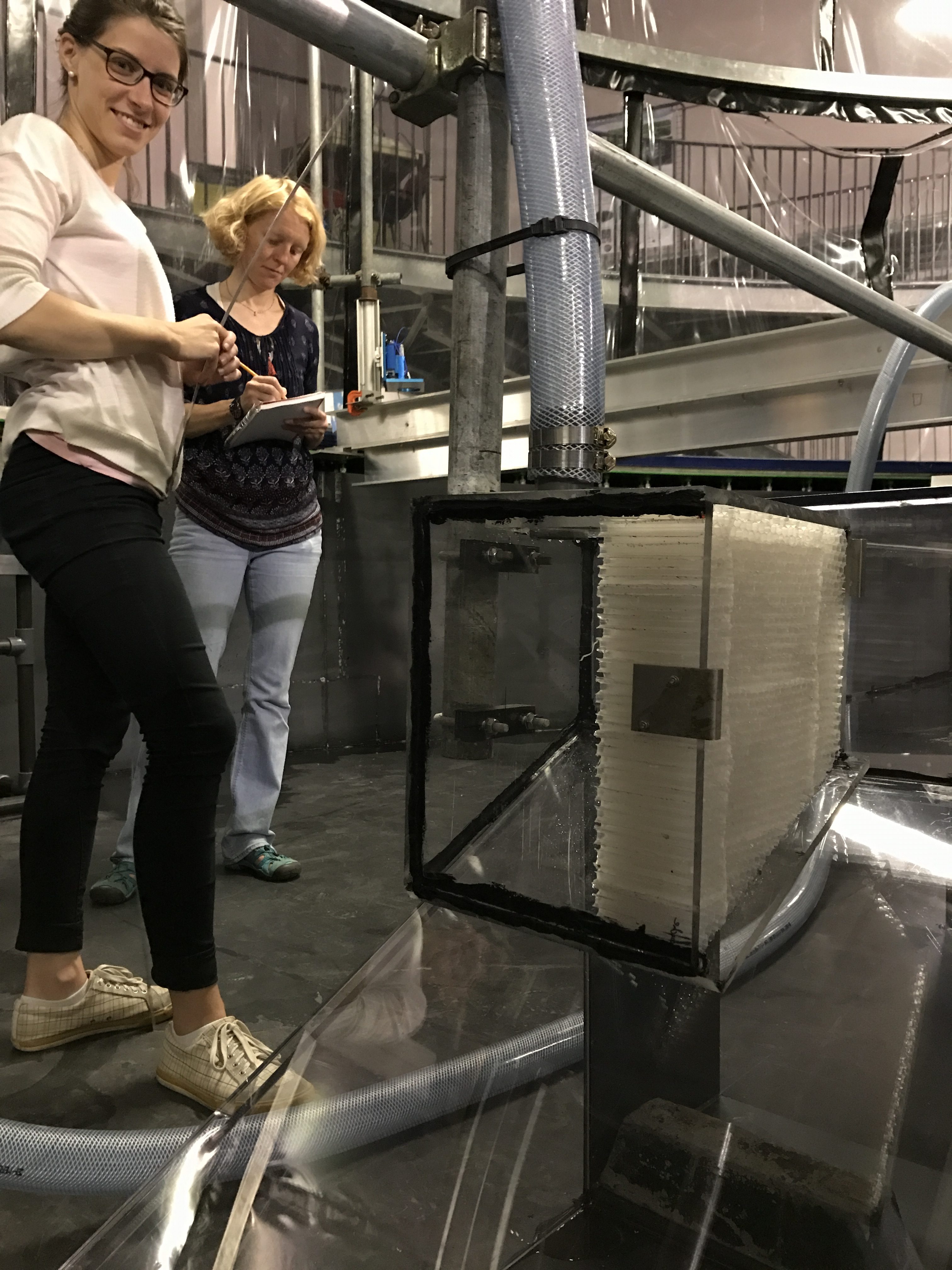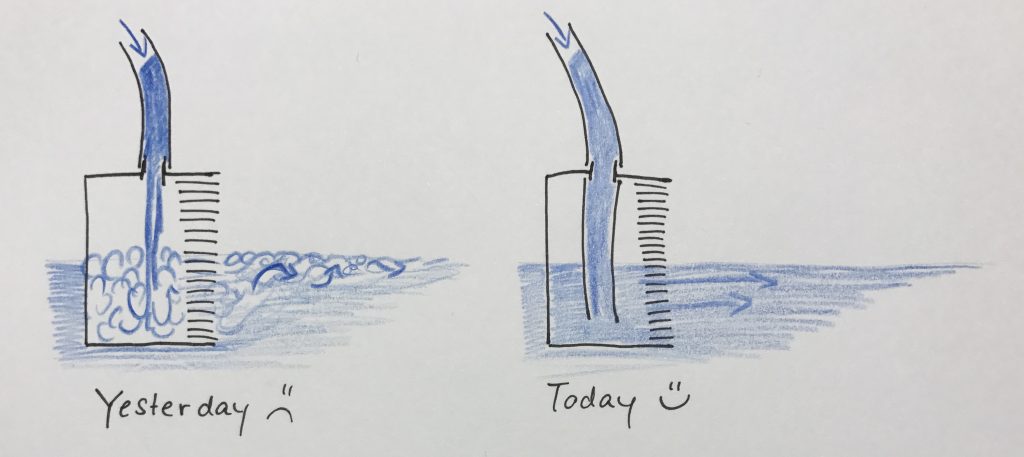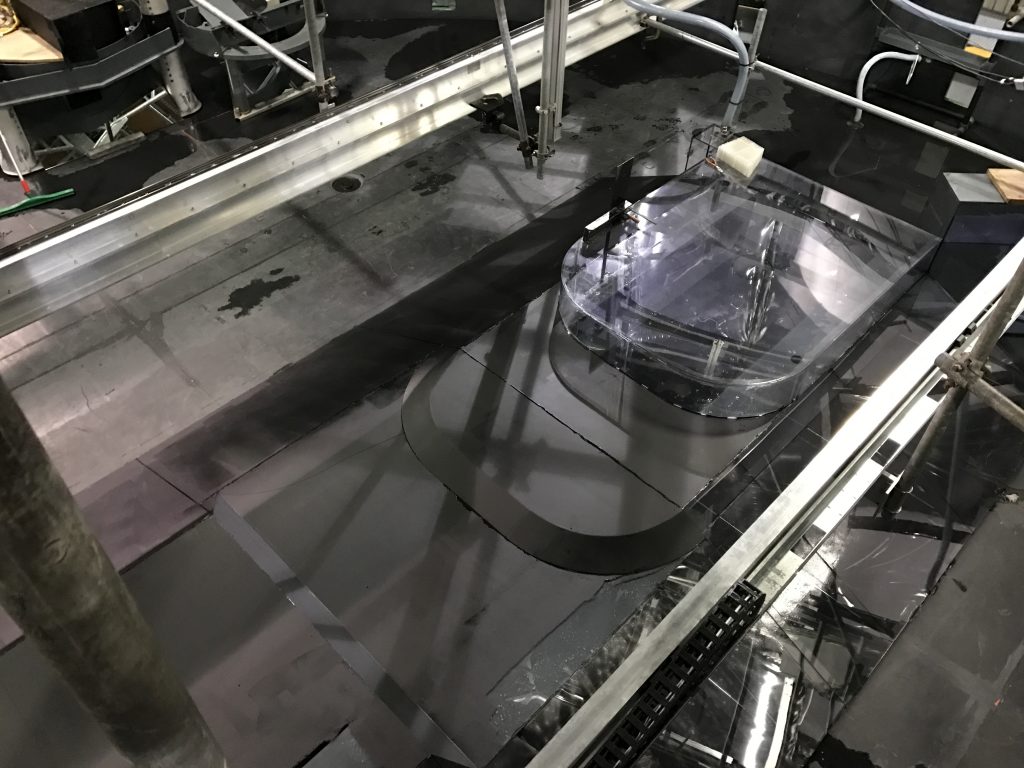
Getting rid of bubbles in our jet
Sometimes the devil is in the details…
On our first day at the Coriolis platform in Grenoble, I took a picture of the “source” in our experiments (see above): The plastic box that is fed by a hose from above and that has one open side with a “honeycomb” (or: a make-the-outflowing-water-nice-and-laminar thingy, technical term) that introduces the water into the tank that we want to follow around Antarctica.
This source is sitting against our topography, and will be partly submerged so that we introduce the jet at water level and below (instead of having a waterfall going in). The idea is to get a nice and bubble-free flow because — as we talked about yesterday — bubbles reflect the laser very strongly and disguise the signal that we are actually interested in.
So when we were doing our first tests last night, the first step was to flush out all the bubbles from all the pipes and hoses that supply the water to our source. Except that bubbles kept coming. And coming. Until, at some point, we realised that this was the problem:
The inflowing water was free-falling through air before hitting the water inside the source box, thus entraining a lot of air bubbles directly inside of the source. Good luck flushing them out… The solution was to add an extra piece of hose to just below the water surface so no air can be entrained.
So when we arrived at the lab this morning to an empty tank* we were delighted to see that the amazing Samuel and Thomas had already fixed the source!
*Yes, the tank really was empty again. Turns out that the reflection of the laser off the topography is so strong that it’s both a problem for data quality and that too much of the light gets scattered out of the water to be safe when we use the laser at it’s real setting for the experiments rather than at the super low setting we used for the tests… Disappointing, yes, but we were so surprised and pleased when we arrived this morning and the topography had already been painted AND the source been fixed! We are super impressed with and grateful to the awesome team here in Grenoble! :-) And we are happy to report that there is water in the tank again and we can start measuring after lunch!

